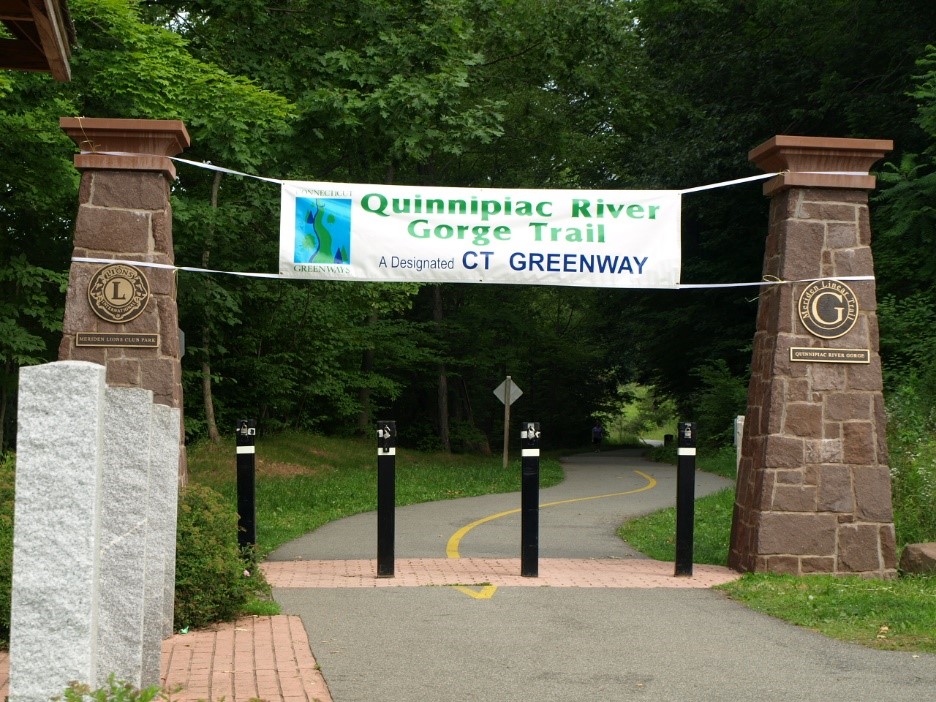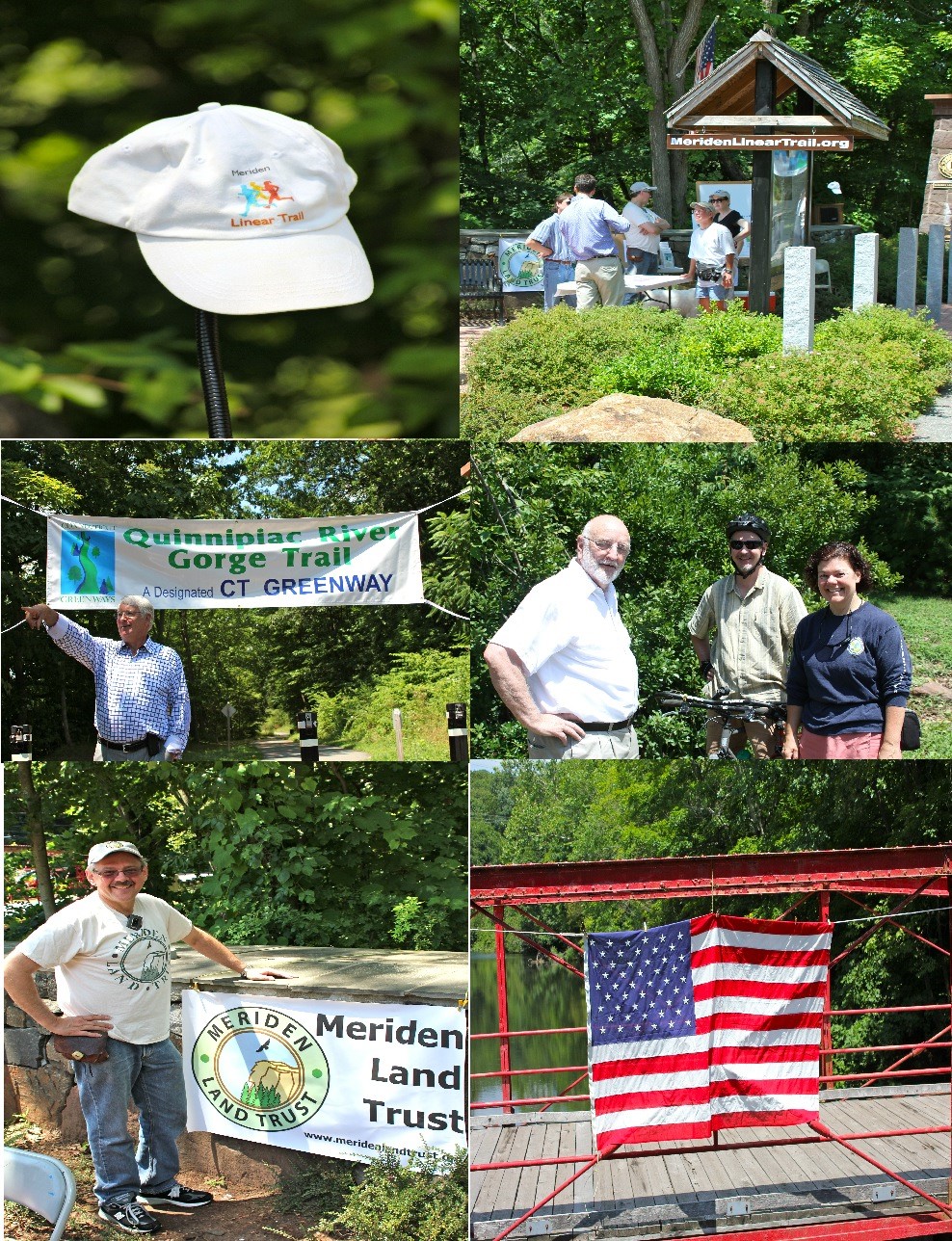Quinnipiac River Gorge Trail
Designed by Fay, Spofford & Thorndike
Construction by Schultz Corp. Terryville CT
Construction of the 1.3-mile linear trail alongside the Quinnipiac River in the City of Meriden was completed in 2006 and celebrated with a Grand Opening on November 3, 2007. This paved trail has as its Grand Entrance, two brownstone columns located in Lion’s Club Park at the handicapped parking area on Oregon Road at Red Bridge. General parking is available and is accessible by sidewalk from the Dossin Beach parking area alongside Hanover Pond on Oregon Road. Additional parking may be found at the gravel parking lot on Finch Avenue at the Cheshire town line. The trail sits on the railroad bed of the Meriden, Waterbury & Connecticut River Railroad (circa 1890’s) and provides several scenic viewing areas along the Quinnipiac River below, with informational kiosks (details of which may be found on this website) installed at some of these areas.
 |
 |
 |
 |
 |
 |
 |
|
Gorge Trail part of CT Greenway
The CT Greenways Council recognized the Quinnipiac River Gorge Trail as a designated Greenway at the 13th Annual CT Greenway Awards on Friday, June 1, 2012 in Watertown.
 The recognition of the Gorge Trail as a CT Greenway positively impacts individuals and improves communities by providing not only recreation and transportation opportunities, but also by influencing economic and community development. On June 1, 2012, see below, the City of Meriden and the Meriden Linear Trail Advisory Committee were honored by having the Q River Gorge Trail recognized as a CT Greenway by the Connecticut Department of Energy & Environmental Protection.
The recognition of the Gorge Trail as a CT Greenway positively impacts individuals and improves communities by providing not only recreation and transportation opportunities, but also by influencing economic and community development. On June 1, 2012, see below, the City of Meriden and the Meriden Linear Trail Advisory Committee were honored by having the Q River Gorge Trail recognized as a CT Greenway by the Connecticut Department of Energy & Environmental Protection.
A Greenway is a corridor of open space that may protect natural resources, preserve scenic landscapes and historical resources or offer opportunities for recreation or non-motorized transportation, may connect existing protected areas and provide access to the outdoors, may be located along a defining natural feature, such as a waterway, along a man-made corridor, including an unused right-of-way, traditional trail routes or historic barge canals or may be a greenspace along a highway or around a village.
Susan Frechette, Deputy Commissioner of the Department of Energy & Environmental Protection (DEEP) said, “Connecticut’s countryside is made up of thousands of miles of recreational trails and river corridors, including greenways that provide users with creative and unique ways to travel. By land, by waterway --- on foot or on bicycles -- Connecticut provides something for everyone in the great outdoors. Today’s ceremony recognized a selection of dedicated and passionate volunteers, who for years have supported and worked to make greenways in their communities a reality.”
“This year’s event took place on the Steele Brook Greenway; A Connecticut Designated (2009) Greenway in Watertown,” said Mark N. Paquette, Chairman of the Connecticut Greenways Council. “This scenic location provides a place for safe recreational activities including walking, running, cross country skiing and wildlife viewing and illustrates the importance of linking key linear space in Connecticut.”
 Greenways in Connecticut cover thousands of acres throughout every county in the state and may include paved or unpaved trail systems, ridgelines, or linked parcels of open space. Many other communities around Connecticut have chosen, through greenway designation, to recognize the importance of river corridors for natural resource protection, recreational opportunities, and scenic values.
Greenways in Connecticut cover thousands of acres throughout every county in the state and may include paved or unpaved trail systems, ridgelines, or linked parcels of open space. Many other communities around Connecticut have chosen, through greenway designation, to recognize the importance of river corridors for natural resource protection, recreational opportunities, and scenic values.
